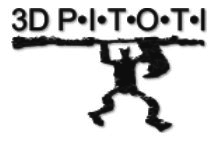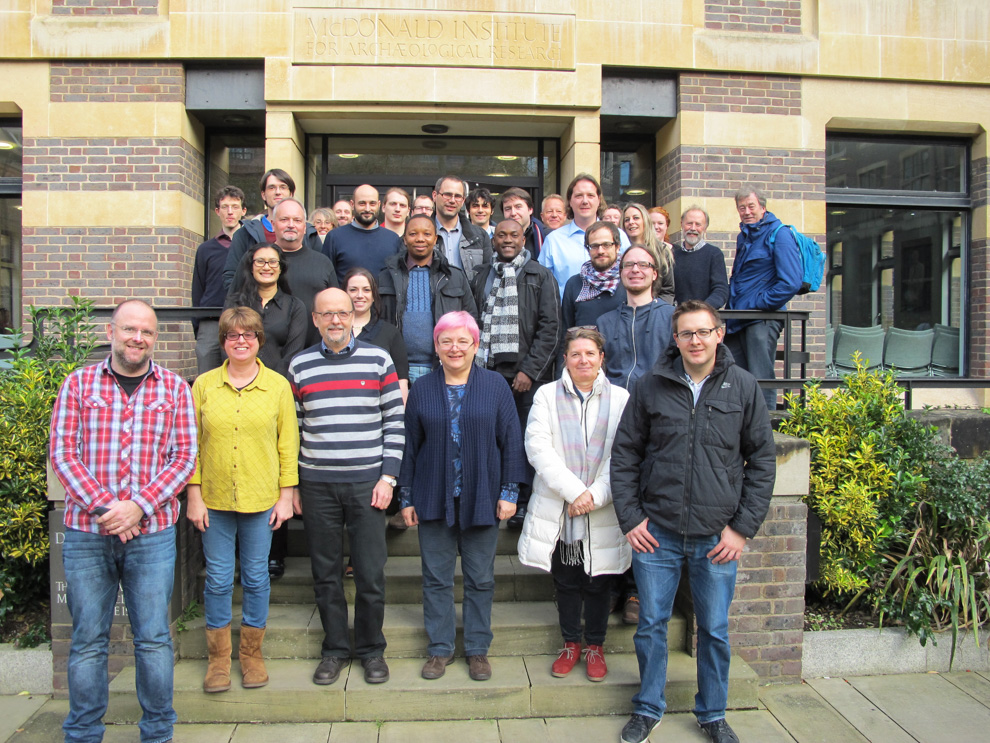
The 3D-PITOTI final event was held in Cambridge, UK on 18th and 19th January.
The first day included an exhibition in the morning at the Howard Theatre within Downing College. Open to the public and press, the team demonstrated many of the novel outcomes of the project. Also included was a live performance of rock engraving which was then scanned with our high-resolution scanner and processed using our novel techniques in real-time.
In the afternoon, the team presented an overview of the 3D-PITOTI pipeline from 3D acquisition, through processing and finally presentation to a number of audiences. Introduced by the Project Coordinator, Sue Cobb (University of Nottingham, UK), speakers included Paolo Medici (Centro Camuno Studi Preistorici), Axel Pinz (Technical University of Graz), Christian Mostegel (Technical University of Graz), Markus Seidl (St. Pölten University Of Applied Sciences), Oliver Reuss (ArcTron3D), Alexander Kulik (Bauhaus University Weimar) and Craig Alexander (University of Cambridge, UK). This was a highlight of the many ground-breaking innovations made in the 3 years with the opportunity to show where many of the challenges were in developing the pipeline. This was followed by a research screening of the 3D-PITOTI film by Fred Baker and Marcel Karnapke (University of Cambridge, UK) „Pitoti Prometheus“ produced to extend the reach of the results to a wider audience.
The second day was a half-day workshop targeted at Archaeologists to provide more detail of the research and science behind the pipeline. With extended presentations, the workshop provided the opportunity for more detailed questions and discussion about the future of digital cultural heritage. The event was a great success with generally positive feedback from all who attended.
For more pictures, have a look at: http://our-event.org/UNI/201601P/
Public Relation
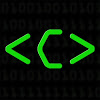
3D-Pitoti partners are presenting their work at the Computerphile YouTube Channel. So far, two videos about the 3D-Pitoti Scanner by EMT (TUG) and the Structure from Motion Pipeline for the Octocopter by ICG (TUG) are available. Within the first two weeks of publishing, more than 66310 people have watched the two videos. Stay tuned for more videos to come!
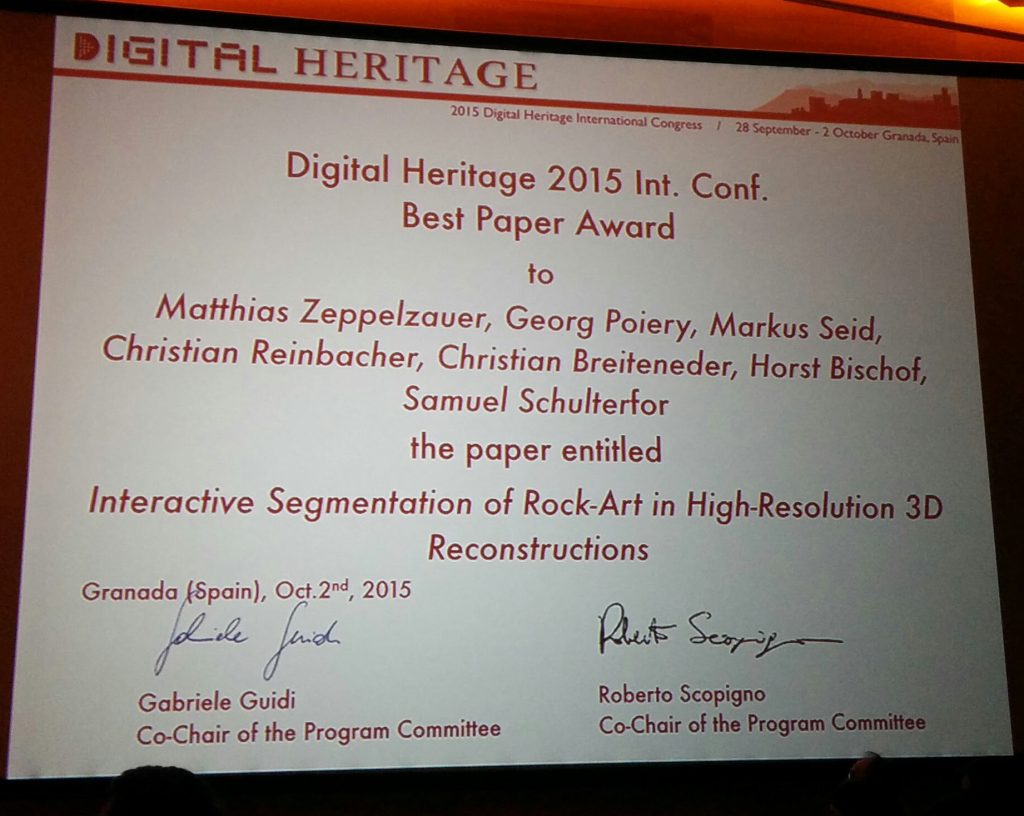
We are very happy to announce that the paper “Interactive Segmentation of Rock-Art in High-Resolution 3D Reconstructions”, which was presented by Christian Reinbacher at the International Conference on Digital Heritage 2015 in Granada Spain was selected as a best paper of the conference! The paper is a cooperation between the 3D-Pitoti partners FHSTP and TUG ICG.
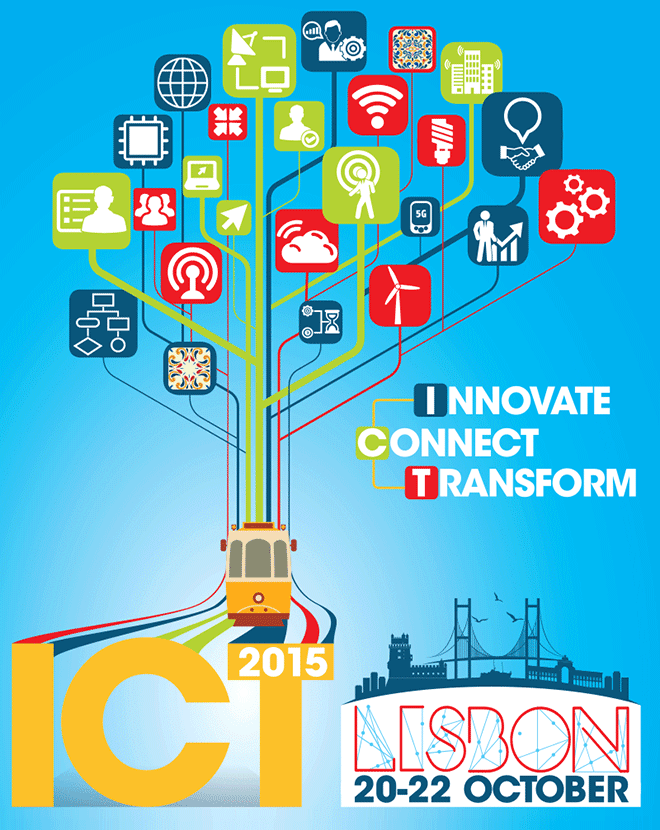
3D-Pitoti at the ICT 2015 at Lisbon
The 3D-Pitoti consortium was present as exhibitors at the Innovate Connect Transform (ICT) which took place at Lisbon from 20—22 October 2015. We have shown our 3D-Pitoti Scanner in action, as well as the 3D-Pitoti pipeline, the database, the Virtual Reality Lap and the 3D-Pitoti App. The exhibition but as well the conference was very well attended with professionals, EC officers, students and school children. The consortium has received a great written feedback from more than 200 people! Especially the EC officers have shown a great interest in our project.
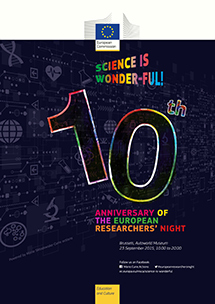
European Researchers Night 2015
The 3D-PITOTI project was featured at the European Researchers’ night event at Fachhochschule St. Pölten University of Applied Sciences FHSTP on the 25th September 2015 (www.fit-for-future.at). In addition, the fellows of the cooperating EU-funded ITN-DCH project were at the same time present at the European Researchers’ night event at Braunschweig, presenting the 3D-Pitoti project as well.

ITN-DCH Fellows were using the 3D-Pitoti Scanner
In 2014, the 3D-Pitoti consortium signed a Memorandum of Understanding with the Marie Skłodowska-Curie action ITN-DCH. During the secondment at ArcTron3D in July 2015 eight ITN-DCH fellows tested the 3D Pitoti Scanner. Gert Holler and Thomas Höll from the TU Graz presented the 3D-Pitoti Scanner to the fellows and provided first-hand information and experiences. The 3D-Pitoti Scanner was used to scan various objects incl. a Roman gravestone. This gravestone was recorded at the Historische Museum Regensburg with 116 images.
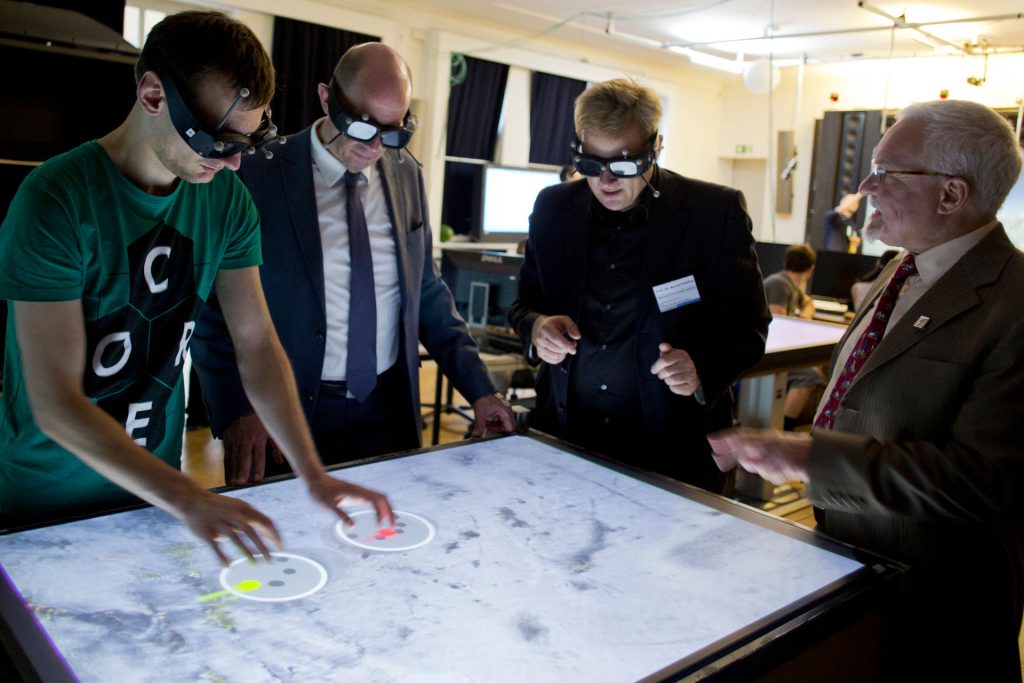
Open day at 3D-PITOTI science lab at Weimar
On 10th – 11th July, 2015, the 3D-PITOTI science lab at the Bauhaus-Universität Weimar was opened to the public. The first visitors were business people attending the Big Data Analytics event funded by the German Federal Ministry of Education and Research (BMBF) within the InnoProfile-Transfer program. This was followed by visitors with the Thuringian Government Minister for Economy and Science Wolfgang Tiefensee. Finally the Lab was opened for 2 days to the general public. Over 150 people interacted with the 3D multi-viewer touch table, 3D Powerwall and 3D prints. The University of Nottingham conducted evaluations including feedback forms, observations and informal interviews.

European Researchers Night 2014
The 3D-PITOTI project was featured at the European Researchers’ night event at Fachhochschule St. Pölten University of Applied Sciences FHSTP on the 26th September 2014. www.fit-for-future.at
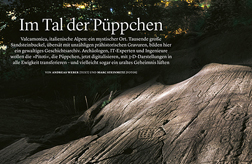
GEO Magazine Nr. 02/14 – Das Himalaya Experiment
Im Fokus der Forschung: Im Tal der Püppchen
Ein gewaltiges Archiv von prähistorischen Gravuren überzieht die Sandsteinbuckel im Valcamonica. Forscher wollen mit 3-D-Technik das Geheimnis der „Pitoti“ lüften: der Püppchen aus der Steinzeit.
www.geo.de
Press
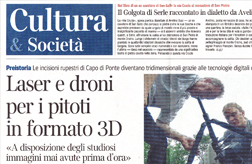
The following are articles in popular press where the 3D-PITOTI project has been featured or listed
- February 2016: „NEW SCANNING TECHNOLOGY REPRODUCES ROCK ART IN 3D“ research*eu results magazine 49
- January 2016: „Bringing the ‚little puppets‘ to life“ Cambridge News
- January 2016: “Prehistoric artists who carved giant rock canvas in Italian Alps were „precursors“ to Picasso and Giacometti, say archaeologists” Culture24
- November 2015: “Ein Tal voller Mysterien” Universum Magazin
- November 2015: “Graffiti der Vorzeit” Neue Züricher Zeitung
- March 2015: „Felsmaleri digital erkennen“ Die Presse
- February 2015: „Prähistorische Felsenkunst unter dem 3D-Scanner“ Ingenieur.de
- February 2015: „Alte Disziplin mit neuen Mitteln“ Austria Innovativ
- February 2015: „Archäologen scannen prähistorische Steinbilder im Valcamonica“ Archäologie Online
- February 2015: „Prähistorische Felsgravuren in Italien werden erstmals mit 3-D-Scanner erfasst“ Der Standard
- Feburary 2015: „Alte Disziplin mit neuen Mitteln. ArchäologInnen untersuchen prähistorische Steinfiguren mit dem 3D-Scanner“ Antike Welt
- January 2015: „Mit einer neuen Technik werden Jahrtausende alte Felsgravuren, die Pitoti in Valcamonica digitalisiert“ Falter
- October 2015: „Singende Datenwürfel und der Tanz der Emotionen“ Der Standard
- September 2015: “How 3D objects and pictures of heritage can connect children worldwide” The Conversation
- May 2014: “Archaische Bilder in modernem Licht” Business Geomatics
- March 2014: “Graffiti aus der Eisenzeit im 3D-Scanner” Der Standard
- March 2014: “Vom Stein auf den Schirm” Niederösterreichische Nachrichten
- June 2013: “Laser e droni per I pitoti in format 3D” Corriere della Sera Newspaper
- March 2013: “Prehistoric rock art becomes digital: research project “3D-PITOTI” receives support from the European Union” Bauhaus-Universität Weimar, internal press
- 11th April, 2013 “Virtual traveller: Beam a live, 3D you into the world” New Scientist, issue 2912
www.newscientist.com
Project Meetings
22 – 30 September 2015 - Sixth project meeting 2nd Review Meeting at Capo di Ponte
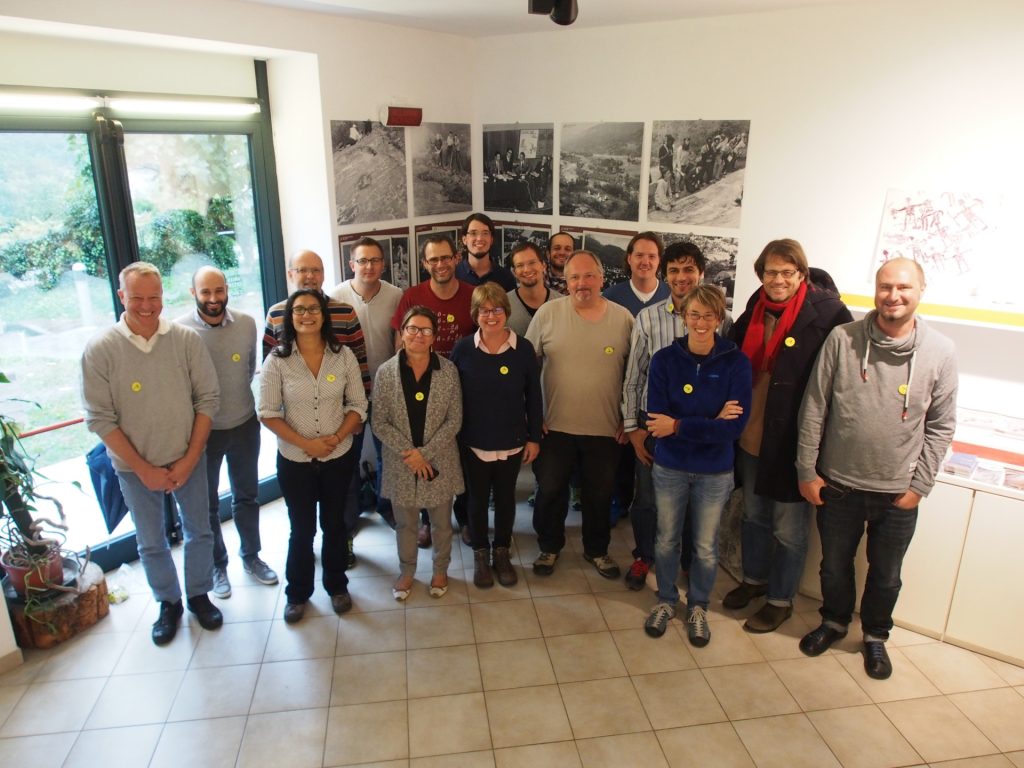
18 – 20 May 2015 - Fifth project meeting 2nd Review Meeting at Weimar

On 20th May, 2015, the 3D-PITOTI project was reviewed by the European Commission and two evaluators at the Bauhaus-Universitat Weimar, Germany. Presentations of the progress and results of each workpackage were given along with the first demonstration of our innovative 3D scanner prototype. This was followed by interactive sessions of our Scientists’ lab.The result of the review was very positive and that we had“exceeded expectations”! The assessment stated that “the main scientific/technological achievements of the project were impressive in rock-art scanning, scanner development, database creation, rendering and interactive visualisation of scanned rock-art. The quality of the results were very good and appear clearly above average. Impact of the project is already visible, and should be important as a tool for scientists, as a nice example of how modern VR technologies can be used for dissemination and education in historical studies as well as dissemination. The 3D-Pitoti database contains information far more detailed and useful than any other rock-art database available in the world today.”
17 – 18 September, 2014 - Fourth project meeting, Valcamonica, Italy
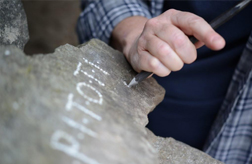
Our fourth project meeting was held in Capo di Ponte, Valcamonica and was hosted by the Associazione Centro Camuno Di Studipreistorici Ed Etnologici (CCSP). This productive two day meeting consisted of presentations by all project partners. The progress of all work packages was discussed and plans for the next six months of work were finalised. In addition, the consortium visited the educational centre of Archeocamuni http://www.archeocamuni.it and were treated to a demonstration of stone cutting by Lida Lopes Cardozo Kindersley. Further tests of the 3D rock-art scanner were carried out at the centre.
25 – 26 February, 2014 - Third project meeting, Graz, Austria
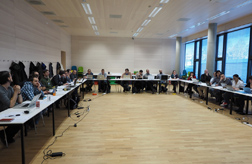
Our third project meeting was hosted by Graz University of Technology (TUG). This productive two day meeting consisted of demonstrations by the team at Graz University of Technology of the latest developments of the rock-art scanner and the UAV applications. The progress of all work packages was discussed and plans for the next six months of work were finalised.
18-19 September, 2013 – Second Project meeting, Weimar, Germany

Our second project meeting was hosted by the Bauhaus-Universität Weimar (BUW). Several workshops were held with the partners in the consortium to exchange ideas, discuss and agree on a number of technical issues. In addition, the six month progress of all the work packages were discussed, and the next six month plans were defined.
This project has received funding from the European Union’s Seventh Framework Programme for research, technological development and demonstration under grant agreement no 600545.
In collaboration and by permission of the Ministero dei beni e delle attività cultural e del turismo, Soprintendenza Archeologia della Lombardia.
Copyright © 2015 3D-PITOTI.EU. All Rights Reserved.
